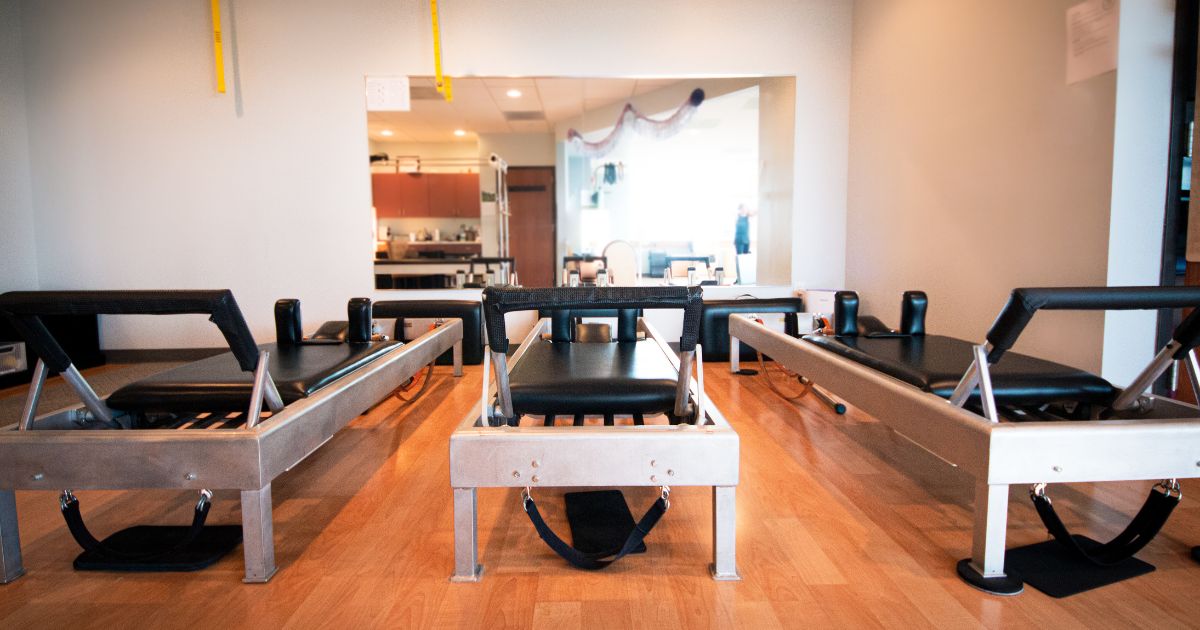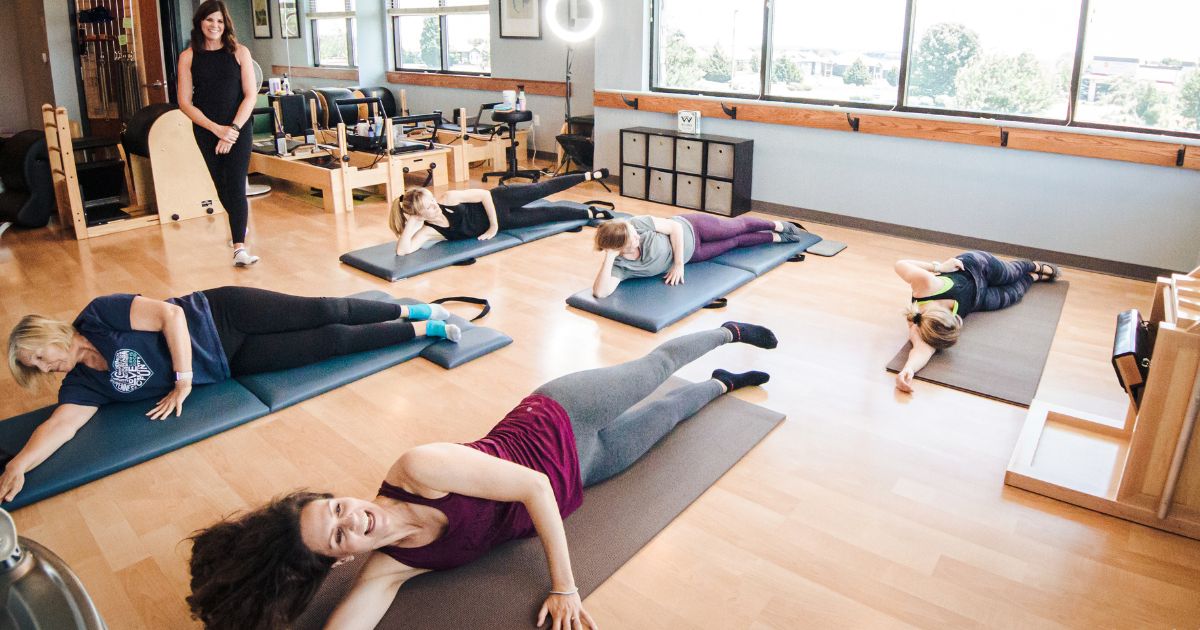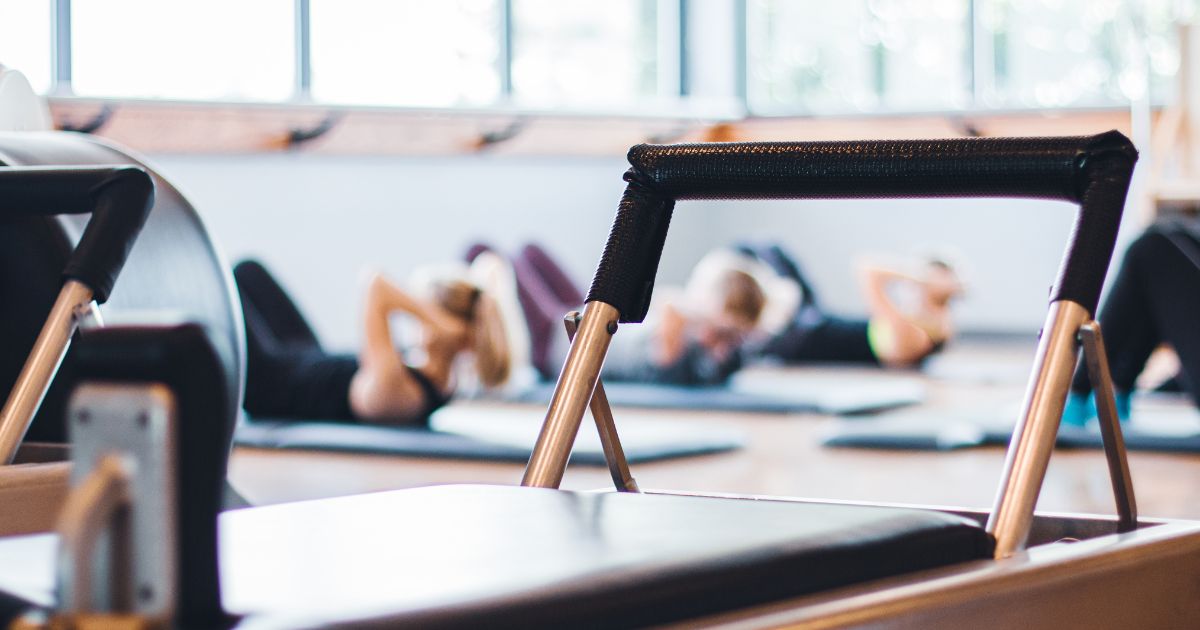My Journey to Classical Pilates
My Pilates journey had plenty of twists, turns and changed directions. It was a road of exploration to find the system that I can teach and practice my entire life while improving the wellbeing of my clients at any age. During the years, I was trained in the classical Pilates method (Peak Pilates), contemporary (Polestar Pilates) and finally authentic Romana’s Pilates. All of this training added “tools” to my teaching toolbox that I could pass on to my clients but only classical Pilates offered structure and clarity that are needed to create a truly effective program.
It wasn’t until I completed my final training with Romana’s Pilates, the gold standard of classical training, that everything truly clicked. I finally understood that Pilates is a system, not just a collection of exercises. While structure is essential, I also recognized that not every exercise is right for every body. My training gave me the confidence to teach different bodies effectively, using all the equipment to help clients find the work in a way that works for them.
This journey shaped how I teach today. I bring confidence, clarity, and a deep respect for the Classical system, ensuring that my clients experience real transformation.
What Is Classical Pilates?
Classical Pilates can mean different things to different people. But to me, as a Romana’s Pilates-certified teacher, it means working with a complete system. I have a full toolbox of equipment for each client, including the reformer, Cadillac, chairs, barrels, and even smaller apparatus like the gondola pole, toe gizmo, and foot corrector.
Unlike many fitness methods, Classical Pilates follows a specific order of exercises, both on the mat and reformer. This provides structure while allowing for flexibility in tailoring sessions to each individual.
Typically, sessions begin on the mat or reformer. As the session progresses, I assess what my client’s body needs that day. Since no two days are the same, each session is adapted accordingly.
Many people assume they need constant variety in their workouts to make progress. But Classical Pilates isn’t about doing something different every time — it’s about refining movement, building strength, and deepening understanding through repetition.
Think about learning math, playing an instrument, or dancing. Mastering the basics is essential before advancing to more complex skills. In Pilates, fundamental exercises like The Hundred are introduced from day one. Over time, this exercise evolves, becoming more challenging through variations in setup, execution, and transition to the next movement.
At its core, Classical Pilates is more than just a workout — it’s a system designed to develop strength, control, and mind-body awareness. When clients follow its principles and engage their minds, they don’t just go through the motions — they experience real transformation.

The Role of Classical Equipment in Achieving Results
When I first started my Pilates journey, I didn’t fully understand the impact that equipment could have on the work.
In 2010, I was lucky enough to find a reformer for sale and bought it — without really knowing my personal preferences. It took time and experience to appreciate how different Classical Pilates equipment is compared to the more mainstream apparatus found in many studios today.
I initially built my business in my home studio, accumulating a mix of classical and contemporary equipment. But everything changed when I had the opportunity to purchase a Gratz reformer from a Pilates colleague. That was the beginning of a transformation that took several years to complete.
In 2017, I began taking regular private lessons with a Romana’s Pilates teacher. For over two years, I trained consistently before starting the teacher training program. This experience deepened my understanding of Classical Pilates and allowed me to feel the difference that working on true classical equipment makes.
What Sets Classical Equipment Apart?
Many modern reformers have been altered to accommodate a wide range of body types. While that may sound appealing, I firmly believe that Classical Pilates equipment truly transforms the body. Otherwise, you’re just exercising — which is still beneficial, but Classical Pilates challenges you in a way that builds strength, control, and a deeper body awareness.
Here’s what makes Classical equipment unique:
- Gratz reformers are shorter in length — This means you catch the spring tension sooner, forcing you to work harder.
- Gratz reformers are narrower — This keeps you aligned and centered, helping you develop better proprioception (body awareness) and strengthening your powerhouse.
- The footbar is simple — it’s either up or down, and it doesn’t lock — You have to be present in your setup, execution, and transitions. Pilates requires awareness, not complacency.
- Classical reformers typically have four springs of the same tension – Unlike contemporary reformers that use different spring tensions, classical reformers provide consistency. Just like learning math, where you master addition before moving to multiplication, Pilates training follows a progressive structure that builds true strength.
Over time, I modified my contemporary equipment to align with the Classical system. I lowered the risers, switched to handles instead of double loops, adjusted the footbar positions, and even changed the wheels to create the signature “drag” of a Classical reformer.
The Transformation to a Fully Classical Studio
In 2021, after completing my Romana’s Pilates training, I made a big decision:
- I transitioned my studio to a fully Classical Pilates studio
- I sold all my contemporary equipment, piece by piece.
- I committed to teaching exclusively on Classical apparatus.
Yes, I lost a handful of clients who didn’t want to make the switch. But those who stayed felt the difference. They realized how much stronger, more connected, and more in control their bodies became.
I’ve always believed that Classical equipment builds more strength, and as I get older, my goal is to stay strong. That’s why I stand by the Classical method and the equipment designed to support it.
Today, my studio is fully equipped with Gratz and Pilates Designs apparatus, including:
- Reformers
- Cadillac
- Wunda Chairs & High Chair
- Arm Chair & Pedi-Pole
- Small Barrels, Spine Correctors & Ladder Barrel
Everything in my studio is designed to support the authentic Classical Pilates experience. The system works best when the equipment stays true to Joseph Pilates’ original design. It challenges, refines, and transforms the body in a way that no other approach can.
What My Clients Say About How Classical Pilates Helps Them
Clients often share how Pilates has made a real difference in their daily lives, especially in moments where their body’s strength and control are put to the test. They appreciate the structure of the classical Pilates system and see the real difference in their lives. As I see it, Pilates training is not just another workout to look more fit. Pilates training is designed to enhance your lifestyle by enabling you to do WHAT YOU LOVE better and without injuries. Here are just a few of the ways classical Pilates has helped some of my clients:
- Staying upright on a bicycle. One client shared how they didn’t fall off their bicycle, but instead felt their powerhouse engage, keeping them steady and upright.
- Surviving a Segway tour mishap. Another client avoided injury during a Segway tour when things didn’t go as planned, thanks to the strength and balance they gained through Pilates.
- Feeling stronger overall. Many clients express how much stronger they feel in both body and mind, having built a solid foundation of strength through consistent Pilates practice.
- Less pain. Clients often report less back, hip, and shoulder pain, issues that had been chronic for years, thanks to the strength, alignment, and mobility Pilates helps to foster.
- Quicker recovery after surgery. Pilates has helped one of my clients recover faster after surgery, supporting her in regaining their mobility and strength. This is from a breast cancer survivor.
- Peace of mind. Above all, many clients mention the peace of mind they feel knowing their body is strong, capable, and resilient, giving them the confidence to live their lives fully.
These transformations are exactly why I’m so passionate about what I do. Pilates doesn’t just change bodies, it changes lives, empowering clients to feel more connected, capable, and confident in their bodies every day.

Are you ready to see what Classical Pilates can do for your body?
Choosing Classical Pilates has been transformative, not just for me but for my clients as well. The structured approach, combined with the adaptability to individual needs, ensures that each person experiences real transformation.
At Wilder Pilates, we don’t just offer a workout — we offer a system that:
- Strengthens your entire body
- Improves posture and alignment
- Enhances control and coordination
- Supports longevity and pain-free movement
Pilates doesn’t just change bodies — it changes lives. When done correctly, with the right equipment and the right method, it becomes a lifetime practice that keeps you strong, capable, and confident in your body every single day.
That’s why I chose Classical Pilates — and why it’s the best for you.
If you’re looking for authentic Classical Pilates in Kansas City, I invite you to visit Wilder Pilates. Whether you’re new to Pilates or looking to experience the authentic Pilates difference, my studio offers the expertise, equipment, and method to help you achieve lasting results.

